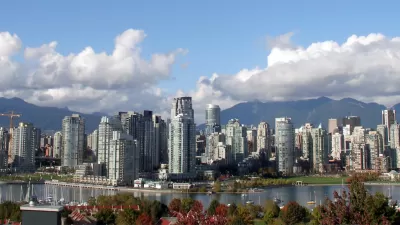The phrase "everything on the street" captures UN-Habitat head Joan Clos's approach to urbanization. In the wake of Habitat III, who is the man behind the conference's "New Urban Agenda"?

In Quito, Ecuador, the UN's Habitat III conference has just adopted a "New Urban Agenda": a set of recommendations to guide the world's cities as they urbanize. Here, Gregory Scruggs profiles the man in charge: executive director Joan Clos. The New Urban Agenda "strongly reflects his views on cities with its calls for compact urban cores, transit-oriented development, reining in sprawl and robust public space."
Clos, the former mayor of Barcelona, takes a sunny view on cities. However, "In many countries, urbanization is seen primarily as a problem: the cause of poverty, malnutrition, air pollution, infant mortality and low life expectancy. [...] The challenge Clos faces is that for many of the 193 U. N. member states, the idea of building skyscraper tower blocks and highways remains plenty appealing. The West did it, after all."
Scruggs, who has followed the lead-up to Habitat III this year, "asked Clos what four words could neatly encapsulate his vision for the New Urban Agenda. His response: 'Everything on the street.'"
Through a deep dive on Clos's background, history in politics, and personal views on planning, a picture emerges of a man whose faith in cities' positive potential is tempered by a sense of the politically feasible. "He says people are being naïve when they compare parks to a city's 'lungs,' or streets to a city's 'veins,' or describe small interventions as 'urban acupuncture.'" Instead, says Clos, "The city is a political construction. It's about people living together and creating coalitions to defend their own agendas."
FULL STORY: A Clos-up view on urbanization

Alabama: Trump Terminates Settlements for Black Communities Harmed By Raw Sewage
Trump deemed the landmark civil rights agreement “illegal DEI and environmental justice policy.”

Planetizen Federal Action Tracker
A weekly monitor of how Trump’s orders and actions are impacting planners and planning in America.

The 120 Year Old Tiny Home Villages That Sheltered San Francisco’s Earthquake Refugees
More than a century ago, San Francisco mobilized to house thousands of residents displaced by the 1906 earthquake. Could their strategy offer a model for the present?

Indy Neighborhood Group Builds Temporary Multi-Use Path
Community members, aided in part by funding from the city, repurposed a vehicle lane to create a protected bike and pedestrian path for the summer season.

Congestion Pricing Drops Holland Tunnel Delays by 65 Percent
New York City’s contentious tolling program has yielded improved traffic and roughly $100 million in revenue for the MTA.

In Both Crashes and Crime, Public Transportation is Far Safer than Driving
Contrary to popular assumptions, public transportation has far lower crash and crime rates than automobile travel. For safer communities, improve and encourage transit travel.
Urban Design for Planners 1: Software Tools
This six-course series explores essential urban design concepts using open source software and equips planners with the tools they need to participate fully in the urban design process.
Planning for Universal Design
Learn the tools for implementing Universal Design in planning regulations.
Clanton & Associates, Inc.
Jessamine County Fiscal Court
Institute for Housing and Urban Development Studies (IHS)
City of Grandview
Harvard GSD Executive Education
Toledo-Lucas County Plan Commissions
Salt Lake City
NYU Wagner Graduate School of Public Service




























